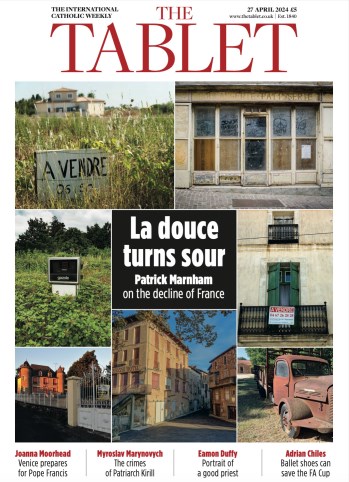The campaign of Donald Trump to become the Republican presidential candidate hit a new low this week with his demand that no Muslim should be allowed into America, whether as a visitor or as a resident. That Mr Trump gained a certain amount of support from fellow citizens indicates the febrile atmosphere of the United States today, following the killing of 14 people in San Bernardino, California, by two people who appear to have become radicalised Muslims. Mr Trump’s defenders not only support his views but point to their nation’s First Amendment right to freedom of speech.
But there is another freedom at stake here, one that was honoured by the Church following a remarkable disputation 50 years ago. Dignitatis Humanae, better known as the Declaration on Religious Freedom, was one of the final documents of the Second Vatican Council which came to a close 50 years ago last Monday. Mr Trump should note its most quoted passage: “This Vatican Council declares that the human person has a right to religious freedom. This freedom means that all men are to be immune from coercion on the part of individuals or of social groups and of any human power, in such wise that no one is to be forced to act in a manner contrary to his beliefs.”
By producing this document, the Catholic Church fully and formally recognised the right of individuals to choose their own beliefs, including the right of non-Catholics not to be Catholic. It might seem obvious now – although wider issues of religious freedom clearly are not, going by the Trump rumpus – but that is a measure of the declaration’s success. It did not seem obvious to the bitter opponents of the declaration at the time. Their point, based on the 1864 Syllabus of Errors of Pope Pius IX, was simply that “error had no rights”. This fight, which went on over all four council sessions, produced the single most dramatic day in the entire proceedings, known as Black Thursday. A procession led by senior American bishops marched angrily out of St Peter’s demanding to see the Pope and bearing a petition which had immediately gained 1,000 signatures. They protested at the way the council’s rules had been manipulated to prevent a vote on the declaration. The Pope promised them the declaration would be top of the agenda in the next session.
The Vatican II document Nostra Aetate, which is in many ways complementary to Dignitatis Humanae, was also promulgated in the final council session in 1965. This expressed the Church’s “esteem” for people of the Muslim faith, pointed out its similarities with Catholicism, and promised “to work sincerely for mutual understanding”. It is notable that Catholics are among Republican rivals of Donald Trump who have been outspoken in their condemnation of him.
The Vatican was due as The Tablet went to press to issue a reflection on relations with the Jewish people, which may well develop the ideas of Nostra Aetate further. Racial and religious prejudice is often just below the surface, and these two documents have placed the Church in the forefront of the battle against them. Vatican II has left no better legacy.
10 December 2015, The Tablet
Dignitatis Humanae: A document that Republican candidate Donald Trump should read
La douce turns sour
 Loading ...
Loading ...
Get Instant Access
Subscribe to The Tablet for just £7.99
Subscribe today to take advantage of our introductory offers and enjoy 30 days' access for just £7.99



What do you think?
You can post as a subscriber user...
User Comments (0)